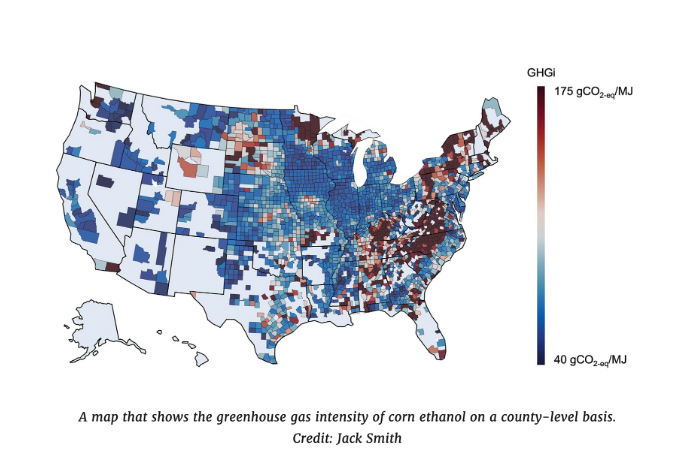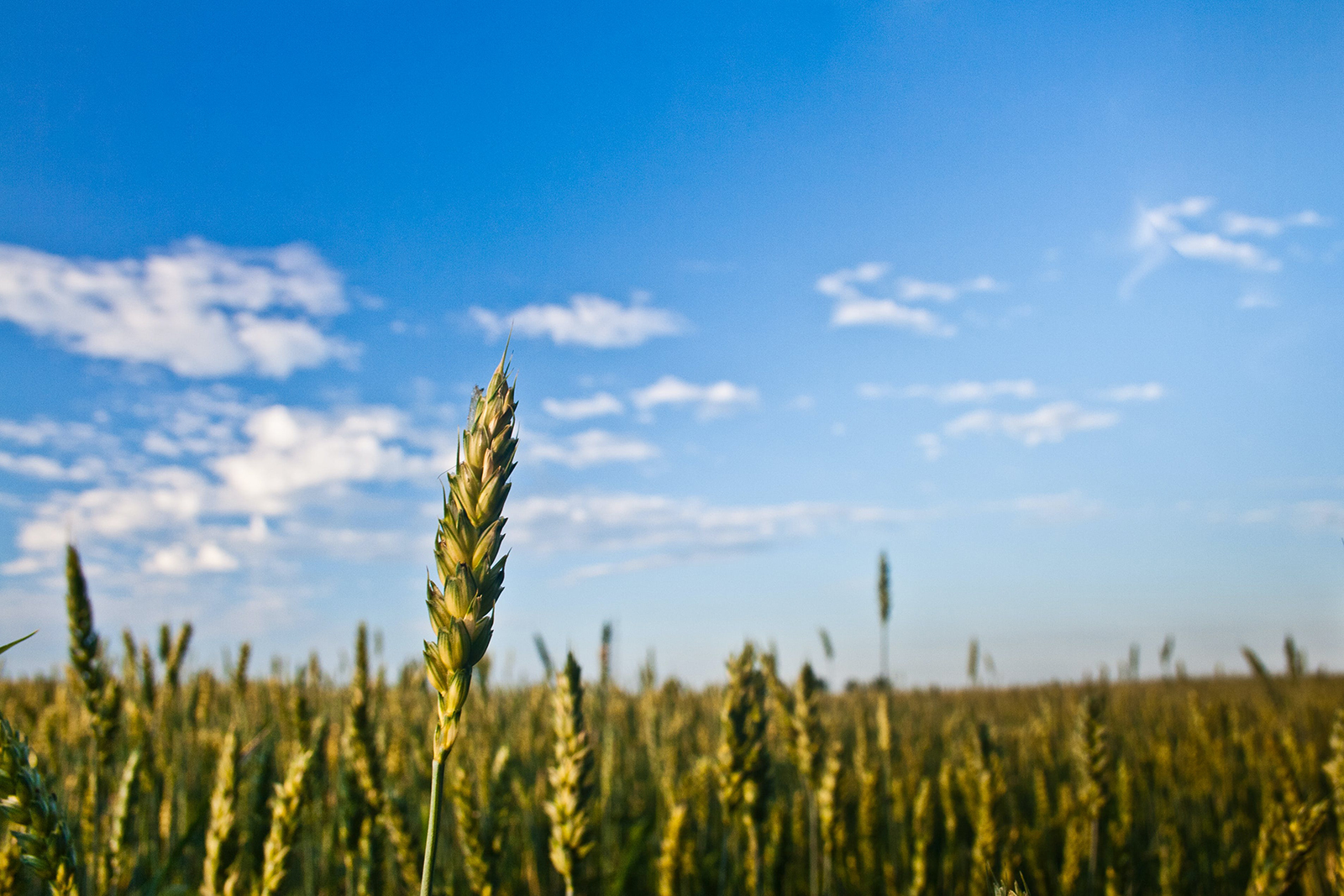The sustainability of first-generation biofuels have attracted controversy, with questions around their true emissions savings and their impacts on other environmental metrics like water pollution and water consumption.
We look at recent scientific evidence on whether and how first-gen biofuels are contributing to climate mitigation and overall environmental benefits.
What are first-generation biofuels?
The two most common liquid fuels from plant biomass are ethanol and biodiesel. Chemically, these are nearly identical to petroleum-based fuels.
First generation biofuels are those made from corn, sugar cane, palm oil, and soybean oil. These have been the dominant feedstock for biofuels since the industry’s modern-day beginnings in the 1970s oil crisis when they were touted as the solution to the supply risks of petrochemicals.
Between 2015 and 2022, biofuel feedstock consumption increased 100%. Now, first-gen biofuels are a scaled, globally traded commodity and proponents say they are a vital market-ready alternative to fossil fuels.
Second generation biofuels made from non-food feedstocks, such as waste biomass or cellulosic biomass (from wood waste) are generally regarded as more sustainable. These have started to hit the market but have not achieved the same scale as first-gen biofuels.
Finally, we have third generation biofuels made from micro or macroalgae, as well as fourth generation feedstocks where genetically modified algae, cyanobacteria, and other microbes produce the fuel. Although technically feasible, these versions have not yet commercially scaled.
Biofuels can be a decarbonisation tool
In theory, biofuels in general are set to play an important role under global decarbonisation pathways modelled by the IPCC.
The international body recommends renewable liquid fuels, alongside low-emissions hydrogen, are vital in replacing petrochemical fuels in applications where electrification is not feasible: aviation, shipping, and heavy-duty land transport.
However, the IPCC also emphasises that biofuels can even actively undermine climate mitigation goals if they are not sourced and manufactured in sustainable ways.
Do the first-generation biofuels that dominate industry today meet the sustainability criteria? Let’s look at recent evidence.
Are they sustainable?
The main thing distinguishing biofuels from petroleum-based fuels is they are made from organic, renewable feedstocks. Since plants grow by absorbing carbon from the atmosphere through photosynthesis, according to their proponents, this makes biofuels zero or low carbon energy sources.
In practice, the extent to which switching from petroleum fuels to biofuels reduces carbon emissions and other environmental impacts varies by case, depending on the ways the feedstock is cultivated and industrially processed.
Dominant feedstocks for ethanol and biodiesel are land-based food crops that need substantial amounts of water, carbon-intensive fertilisers, pesticides, and energy for harvest and transport.
Critics also say that biofuels contribute towards other, equally serious, dimensions of the environmental crisis: water pollution from fertilisers and pesticides, for example, or the biodiversity loss that comes from converting habitats to cropland.
The sustainability of US corn biofuel
Maize, grown mainly in the US, Brazil, and Argentina, is the biggest source of biofuels globally. Its high starch content means the biomass can be easily converted to ethanol under fermentation.
Genetic modification and new cost-effective production technologies have led to a ballooning in the global maize-based biofuel production industry. Another boost came from the US’ 2006 legal mandate for a certain percentage of fuel to include this biobased ingredient. Usually, around 10% of fuel in a US car gas tank consists of corn biofuel.
These were the conclusions of a paper in 2022 published by Colorado University researchers published their life-cycle assessmen of biofuels – a 360 degree view of the environmental impacts that come from each stage of biofuel harvesting, processing, and use.
They found that, as with all biobased products, the environmental impacts of the corn biofuel varies depending how they are produced. Corn crops grown with high nitrogen fertiliser will score poorly on wate pollution. Certain crop lands will have displaced biodiversity rich habitats , scoring poorly on biodiversity indiacots, while others have been grown on degraded land.
Their research made a significant contribution to the debate around the sustainability of biofuels because their analysis of US corn ethanol offers a very granular look at the supply chain. They conducted their life cycle analysis on a county-by-county basis, covering most counties in the US in 2017.

The researchers found that the average carbon intensity of US corn and soybean-based production and use amounted to 65.3 grams of carbon dioxide equivalent per megajoule of energy provided by the fuel. This is less than for petroleum-based gas, which emits 93 grams of carbon dioxide per megajoule that the fuel provides. So, biofuels can lower emissions, particularly when the corn feedstock has been grown in less carbon intensive ways.
However, carbon emissions are only part of the interlocking climate and environmental crises faced by the planet. How do biofuels perform on other vital environmental metrics?
The researchers found that biofuel production had major negative impacts on land use and nitrogen pollution – far higher than gasoline. According to one researcher Smith, “the emissions reductions we’re achieving may not be worth the land and water opportunity costs.”
Even in scenarios where first generation biofuels draw on land crops cultivated using low-carbon agricultural techniques and not on former high carbon-storing habitats, they almost always have negative impacts on water availability and the availability of agricultural land for food production.
Again, the severity of these impacts vary by region. In dry environments where agricultural land is already very scarce, these impacts are amplified.
Brazilian sugarcane and net carbon emissions
The above study concerned soybean and corn biofuels produced in the US. What about other biofuel producers and feedstocks?
Sugar is the second largest source of biofuels globally according to the IEA. For bioethanol in particular, 40% globally is made from sugarcane and sugar beet.
Brazil is the second largest bioethanol producer, with the country increasing the area dedicated to sugarcane cultivation by 150% since 1980. It has been projected that two-third of the 100 billion litre production increase in bioethanol by 2028 will come from Brazilian sugarcane.
A very recent review paper on the sustainability of sugarcane-derived bioenergy production in Brazil states that most sugarcane expansion there has occurred on what was formerly pasture land rather than rainforest.
The question then becomes how converting pasture land into sugarcane farms affects the environment: in particular, the soil’s carbon content, overall health, and its ecosystem services.
The most comprehensive soil carbon study of Brazilian sugarcane expansion looked at 135 sites where sugar crops displaced former natural vegetation or pastureland. In these cases, sugarcane cultivation leads to a net loss in soil carbon.
It takes 8 years for the new sugarcane crop on former natural vegetation to ‘earn back’ these carbon losses to the atmosphere – by displacing burnt fossil fuels – and 2 to 3 years for pastures.
Another study by Silva-Olaya confirmed that converting pasture to sugarcane resulted in a net loss of carbon from the soil. These studies only covered carbon and not other greenhouse gas emissions like nitrous oxide.
Not enough sustainable first-gen feedstock to meet demand
A consistent picture emerges from the latest studies on regional biofuel supply chains. In theory, biofuels could be an essential contributor to decarbonisation and biofuels do reduce consumer emissions by replacing fossil fuels. Yet full life-cycle assessments paint a different picture: the way that most feedstocks are grown means that first generation biofuels are making minimal inroads into global carbon emissions.
This accords with a Royal Society Review paper from 2020 on the sustainability of biofuels.
As a rule of thumb, the authors found that first generation biofuels produce lower greenhouse gas emissions than fossil fuels only when biomass used to make them did not involve land use change – in other words, when biofuel cropland did not come at the cost of previously unexploited habitats that had high levels of carbon sequestration. However, this is not the case for most of the world’s biofuel crops.
There is an even bigger problem: if we only limited ourselves to first-gen feedstock volumes that did not require land-use conversion, there would not be enough to produce the biofuels needed to achieve the greenhouse gas savings targeted by the EU Renewable Energy Directive.
Solutions to the supply-sustainability dilemma
The IPCC stated in its sixth assessment that “the large contribution of emissions from poorly quantified traditional biofuel use” over 2015 to 2019 means they cannot confidently assert these fuels have led to emissions reductions over that period. The biofuels industry is in significant need of an overhaul to ensure it can contribute to climate mitigation goals.
The most promising pathway for biofuel sustainability is for producers to adopt more sustainable inputs like organic waste from farms and forestry as well as crops grown on degraded land unsuitable for human food or animal feed production. Adopting second-generation biofuels is one recommendation presented by the Royal Society paper on the environmental sustainability of biofuels.
The IEA believes that conventional biofuels grown from crops must be significantly reduced by 2050 to ensure sustainability: In its net zero scenario, over 60% of the 100 EJ global bioenergy supply should come from waste streams that do not take up land for food production or conflict with biodiversity conservation.
This movement away from land-intensive crop biofuels is already happening. The European Union and its member states have legislated to keep land crop biofuel production to a minimum.
Yet conventional crops like maize remain the cheapest feedstocks. Production costs for using more sustainable feedstocks of agricultural and forestry byproducts are at least 50% higher, according to the IEA.
One barrier in the way of changing the biofuels industry is that there is no standard way of auditing its supply chains so that policymakers can assess the true impacts of shifting part of fossil demand to renewable fuels.
These audits should account for the full spectrum of environmental impacts from feedstock to use and from greenhouse gas emissions to water pollution and biodiversity. Adding to the complexity of the task, standards for biofuel supply chain audits will have to give a methodology for assessing rural development and human health impacts.






